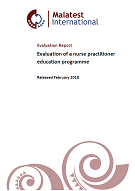Source: New Zealand Ministry of Health – Press Release/Statement:
Headline: DataPharm (beta)

DataPharm is a web-based tool (beta version) that displays summary data about prescriptions and dispensings that were dispensed in the community and funded by the New Zealand Government. The data presented is sourced from the Ministry of Health’s Pharmaceutical Collection.
You can search the data and filter by year of dispensing, medicine (at chemical formulation, chemical, therapeutic group level and therapeutic group level 2), and DHB area where the prescription was filled. You can download the filtered results in .csv format.
A technical document is available to accompany the web tool. The document contains information about key data limitations and guidance on interpreting the data presented as clinical context, funding, practice and a number of other contextual properties can affect the trends you see.
The aggregate data presented in DataPharm is available for you to download as a zip package of .csv files.
We welcome your feedback on this tool. You can access the feedback form here:
—

